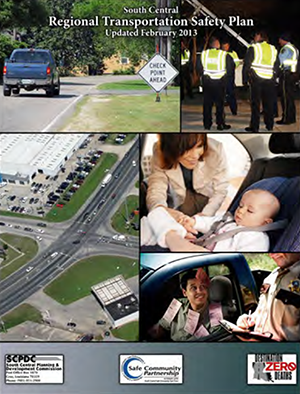UDOT's Advanced Data Collection Methods Result in Better Quality of Roadway/Asset Data and Improved Internal Management of Data
Summary from: Collection and Use of Roadway Asset Data In Utah Roadway Safety Data and Analysis Case Study FHWA-SA-14-078
Background
The Utah Department of Transportation (UDOT) maintains 5,869 centerline miles1 of roadway and 310 miles of freeway ramps, which together comprise 15 percent of the total roadway centerline miles (41,508) open to the public in Utah. 19,056 of these miles consist of unpaved roads. The UDOT-maintained roads carry 67 percent of the vehicle miles traveled in the State.1
The scope of the case study includes data collected on the State system only. Each road was driven in both directions during data collection, resulting in approximately 12,000 total miles driven.
The data collection effort performed by UDOT was a first-of-its-kind, surveying the entire state roadway network and obtaining a wide set of data elements. LiDAR (a term that combines “light” and “radar”) was used by the selected vendor to collect a variety of asset data. The LiDAR technology creates a three dimensional model of the assets scanned along the roadway, and is performed in a single pass at highway speeds.
Key Accomplishments
- The Utah Department of Transportation (UDOT) used state-of-the-art data collection methods to collect roadway condition, location and roadway asset data.
- Within UDOT, Asset Management, Safety, Planning and other divisions are now able to share data and jointly manage the roadway asset data. Other areas within UDOT also benefit from this shared data resource.
- The roadway asset data are accessible to the public through an online program called UPlan.
- UDOT used a combination of Federal and state funding to cover the cost of the project for first-round data collection which totaled $2.25 Million: $725,000 of HSIP funds and $825,000 of SPR funds, and $700,000 in State funds.
UDOT surveyed the entire State roadway network and obtained a wide set of data elements.
LiDAR (a term that combines “light” and “radar”) was used to collect the asset data, and was also used to create a three dimensional model of the assets scanned along the roadway.
UPlan was created as an online program to share all of the data needed to plan and program a project. UPlan is a spatial database of locations, location attributes and assets, supported in GIS and used by UDOT, their contractors, and the public.
Results
Through this data collection effort, UDOT has improve their budgeting due to the enhanced knowledge of quantity and quality of roadway assets.
The ability to share access to the roadway information enables divisions to work more closely together.
UDOT's Traffic and Safety Division has enhanced safety analysis through improved roadway attributes and crash data.
Reference
- Collection and Use of Roadway Asset Data - The Utah Experiment. Jones, W. Scott. 2013. Roadway Safety Data Partnership Peer Exchange.
Contact
Stan Burns
Director of Asset Management
801-965-4150
sburns@utah.gov
Utah Department of Transportation
Asset Management Division, Traffic & Safety Division
4501 South 2700 West
PO Box 143200
Salt Lake City, UT 84114-3200



